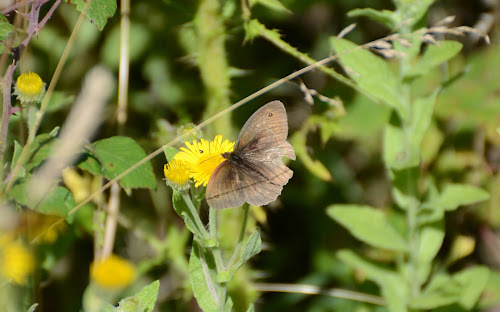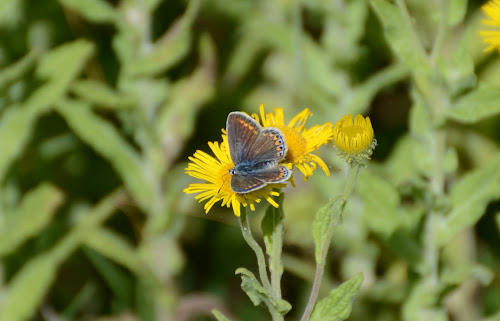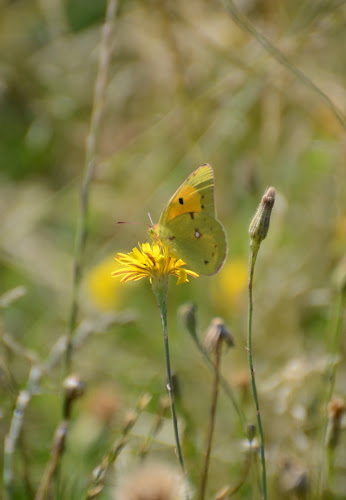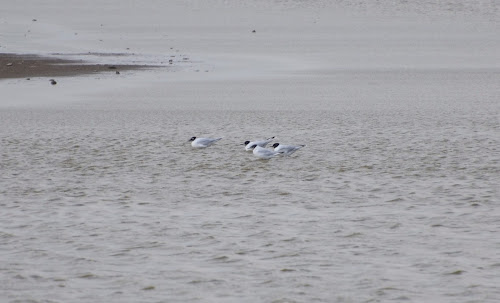So having managed to see and tick off seven new birds for the year in the space of three days I had a feeling my luck was probably going to run out and I would see many an empty lake or silent tree for the remainder of the summer.
30/07/13 - RSPB Minsmere (again)
Having had a productive session at this wonderful reserve a few days previously I decided to try again and maybe catch up with the sandpipers that had defeated me last time. I arrived early and again tried to see the stone curlews near North Wall. Again this ended fruitlessly and I was becoming convinced that my luck had expired.
I got to East Hide at a reasonable time and was again confronted with numerous spotted redshanks and black-tailed godwits and sat next to them, two curlew sandpipers!
Nice to see them showing some of their brick-red summer plumage. Further scanning through the waders revealed similar species as on the last trip with good numbers of green sandpipers around. At the back of East Scrape I saw a sandpiper feeding that appeared to have a speckled back and bold eye-stripe - a wood sandpiper? As I got it in the scope I was pretty convinced it was but it flew off seconds later - very frustrating!
A look out to sea having left the hide was well worth it when a whimbrel flew south and a sandwich tern flew towards the scrapes with a sand eel in its beak.
I set off along the seasonal wader trail with little expectation after the previous visit. I was chased along the path by a very large flock of goldfinches that were feeding in the thistles.
I got to the furthest pool and at first glance it appeared devoid of wader activity. A few geese and ducks loafing around but very little else. I set up the scope anyway and scanned around. Just as I got to the western end (which was fairly well obscured by reeds) a saw a sandpiper moving in some low vegetation. A quick repositioning of the scope and it had disappeared. I then found a couple of common snipe in the same area and then the mystery sandpiper reappeared, this time with a friend. It was a wood sandpiper, as was its friend, and then his friend in turn. Three wood sandpipers all together! What a result. I continued to watch them with the snipe until they all took to the air due to this chap marauding through the pool.

The rest of the visit was uneventful as far as new birds go but there were still fabulous views of four bitterns, marsh harriers, bearded tits and Cetti's warblers to be had. At the centre I asked about the stone curlews and met the very helpful Ian (who I have communicate with before from the RSPB Sandwell Valley twitter account). He gave me some tips, one of which I tried as I left the centre. To my amazement standing right there were two stone curlews - amazing! They we a little far away (in the rain) for the camera so here is an attempt with the proper camera and an attempt at phone-scoping them.
31/07/13 - Christchurch Park, Ipswich
Having completed the depressing task of saying goodbye to the ever-wonderful Beth at the station in the evening I thought I would quickly sneak into the park before closing and have a brief look for Mabel, the obliging tawny owl.
As you can guess from the snow, this photo was not taken this July! This is another one I took of her a while ago - she wasn't home on this visit. I quickly looped around the pools hoping for a mandarin and, as the light was fading along with my enthusiasm, one appeared. I had no camera so I had to make do with my phone in bad light.
02/08/13 - Melton
Dad and I decided to go for a brief afternoon visit to one of our favourite areas, The river Deben at Melton. This area is usually great for waders and this visit did not disappoint. Over the course of the visit we saw dozens of oystercatchers, at least 40 curlews, a couple of common sandpipers, ringed plovers, dunlin and lots more. Greenshanks put on a good show as they chased invertebrates in the water.

However the greenshank was not the year tick from this visit (it would have been a week earlier before the first trip to Minsmere). The tick came in the form of that most sort after bird - a turtle dove. Having earlier commented to dad how it would have been nice to find one in a fanciful manor I was looking at doves in dead trees when one with a particularly pink breast caught my eye. It was miles away and only just identifiable but the very pink breast combined with a very patterned back led me to believe that this was in fact a turtle dove. It was much to far away to photograph unfortunately but I look forward to hopefully getting that opportunity some time in the future.








































